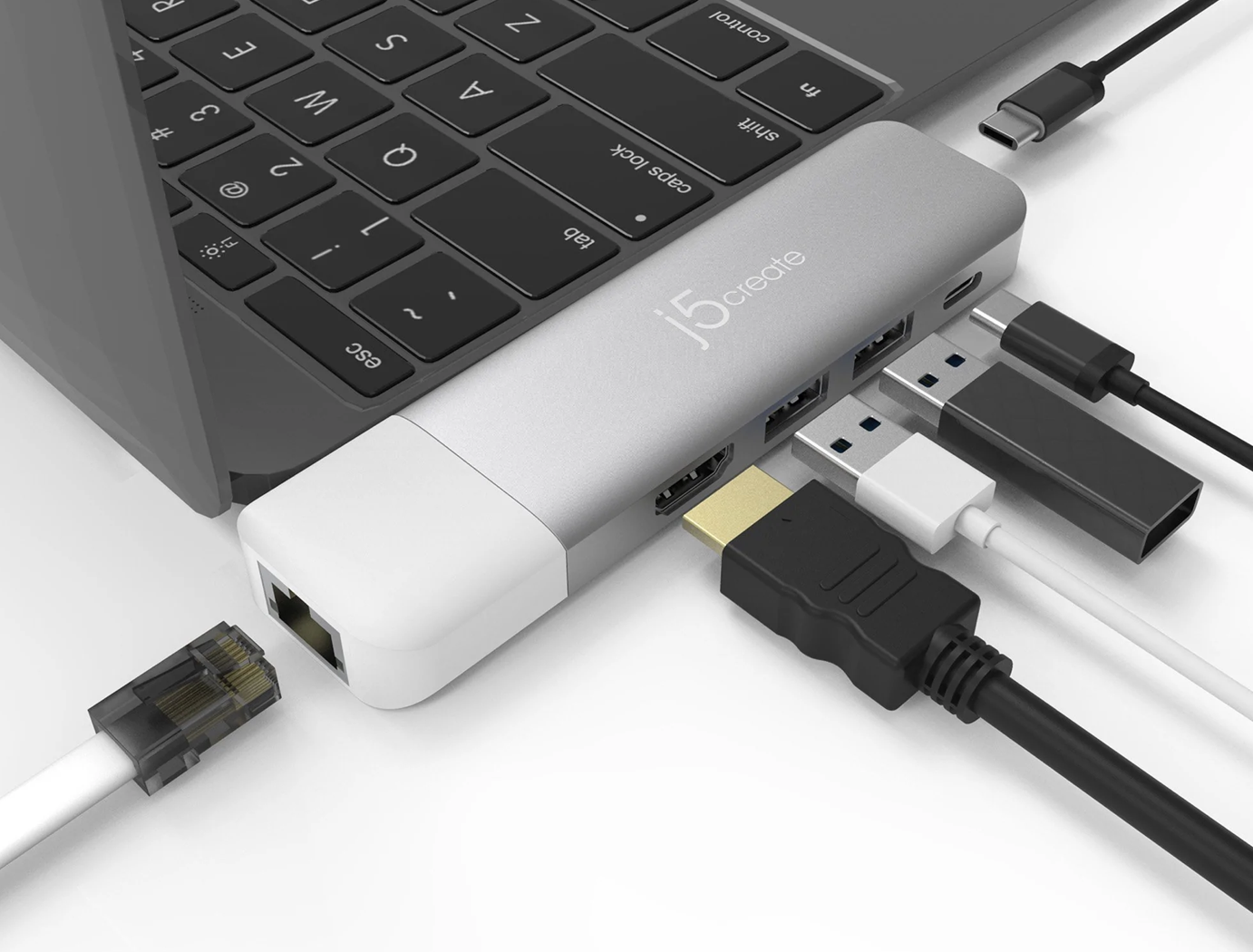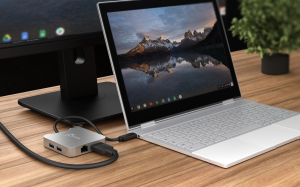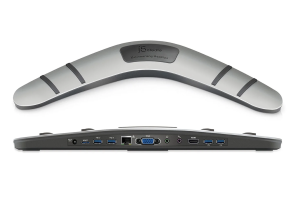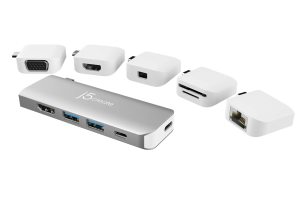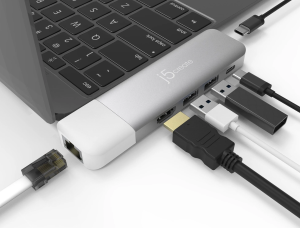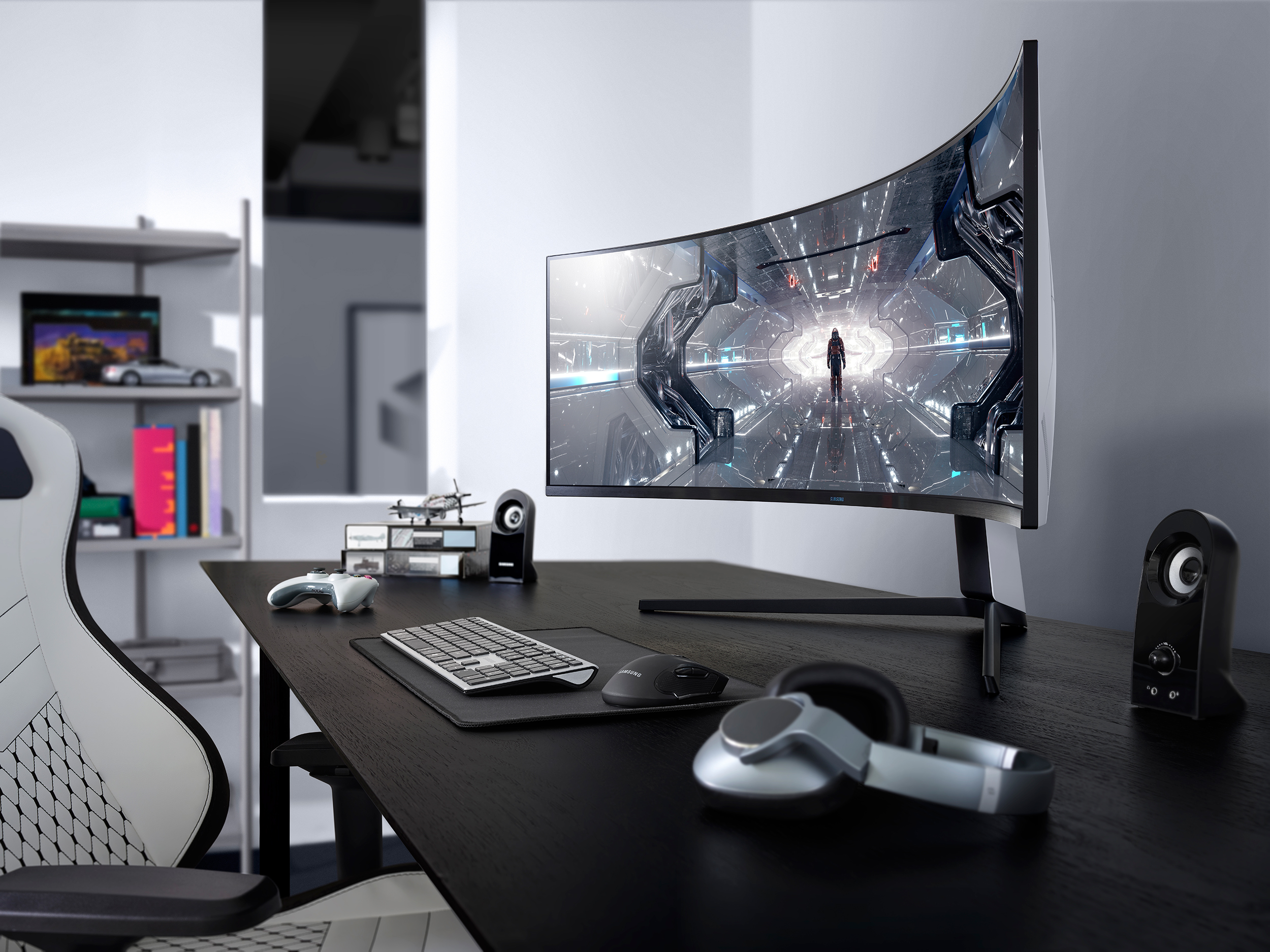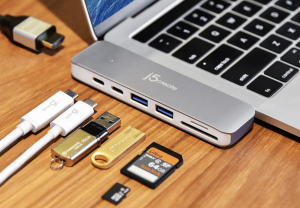
What is a hub?
USB hubs typically mainly function to expand the number of ports you have and offer maybe one or maximum two extra display ports on them. They usually don’t offer the highest number of ports and the reason for that is that they are powered by the laptop/computer itself; meaning they are BUS-powered.
A BUS-powered USB device is limited in how many peripherals it can power. If the port that the hub is connected to can only output 7.5W, then you cannot power any combination of devices that require more than that, regardless of how many ports the hub has.
What is a docking station?
We already know a USB port can provide a decent amount of power, as evident by phone chargers that provide fast charging capabilities through that port. But the fact is, many of the ports you find on laptops and PCs are not as powerful. Manufacturers also don’t make it easy for people to know just how much power each USB port can provide and USB hubs cannot provide any more power to connected peripherals than the port can provide them with. Docking stations, however, circumvent the confusion.
Generally, a docking station is a more elaborate USB hub with a separate power adapter. Since you typically find a higher number of ports on docking stations, almost all of them come with a power adapter to be able to power all the ports, especially the power-hungry display outs such as DisplayPort and HDMI. While docking stations also connect to the computer via USB, they are not limited by that port’s power output, but rather its data throughput.
What distinguishes hubs vs docking stations?
Power delivery
Hubs are typically powered by the USB port they are attached to, whereas docking stations are typically connected to a wall outlet. This means if you connect too many peripherals on your hub, you might run into some power delivery issues as the port might not have enough power running through it.
Because docking stations don’t have power-delivery constraints, they are usually more flexible in the number of ports they provide. However, because docking stations come with a power adapter, they are less portable. This does mean, however, that docking stations are more expensive because they supply their own power separate from the computer they are connected to. But this allows them to have more and faster ports than USB hubs.
Number and types of ports
While simple USB hubs that just give you a few extra USB ports are typically very affordable, more complex hubs with a Gigabit Ethernet port or a fast SD and Micro SD card slot are usually pricier. Docking stations, however, can easily cost north of 350 dirhams and the best docking stations can cost even double that for a comprehensive selection of extra USB ports, display outs, and audio in/outs. Enterprise level docking stations can cost even higher.
The price difference is a reflection of the types of ports each device offers. On a pricier docking station, you may find a 60-100W PD charging port in USB-C or USB-A, four high-speed USB 3.0 ports (3.1 Gen 1 or Gen 2 are rarer but also an option), a Gigabit Ethernet port, an audio in/out (that in rare cases can drive higher impedance headphones), and varying combinations of display outs such as dual 4K 60Hz outs (in the most expensive of docking stations) and HDMI 2.0 and 2.1.
On USB hubs, however, you can typically find one or two high-speed USB ports, a display out that can support 1080p, a Gigabit Ethernet port, SD/Micro SD slot, or separate audio in/out. What you will not find is higher standards of HDMI like 2.0 or 2.1 or any type of DisplayPort as they are typically saved for more niche use-case scenarios.
The issue of portability
Docking stations are not very portable as they might have a separate, chunky power brick that needs to be connected to them at all times. Many of them also have fans in them, adding to their bulkiness and weight. They are meant to be stationary computer peripherals.
If you are using a laptop on the go, you have no option but to go for a portable USB hub, but at home, if you want to turn your laptop into a more flexible workstation, it is worth spending the extra money to get a docking station that is always connected to power and can give you all the ports you will need.
What docking station to buy?
After careful consideration of your needs, if you decided that docking stations are going to be the right choice for your needs, you might want to check out some of j5create’s products; a company that specializes in making some of the best docking stations.
Perhaps this list will help you out if the question on your mind is how to choose a docking station that is right for you. Of course, this question should only come to your mind once you’ve already weighed the issue of USB-C hubs vs docking stations.
J5 CREATE JUD481 USB 3.0 Boomerang Station
We’re starting off the list with a unique-looking docking station! The JUD481 has been made in the shape of a boomerang. It is clearly designed for laptops (or monitors with a very specific stand in the shape of a V) because of how laptops can prop up on it during use. This dock is really easy to use as you will only be connecting one cable to your laptop.
The dock features all the ports you need, with only one caveat, which we will get to. It offers five extra USB ports; one in the shape of a micro-B port that is used for some types of external hard drives and four USB-A ports, two of which can be used to charge your phone or other such devices. Microphone input and an audio jack are also present in this docking station. On top of the USB ports, you will also get an HDMI and a VGA port.
But here’s the main gripe with this dock: the HDMI is only capable of 1080p video output, which could be problematic for people who have a 2K or a 4K monitor.
This is one of the best docking stations for laptop owners because of its shape. For PC owners, only consider this docking station if your 1080p monitor’s stand is a V-shaped one!
J5 CREATE JCD389 USB-C Modular mini dock 11-in-1
One of the best docking stations for MacBook users, the JCD389 is unique in that it offers a magnetic connector on one end that can connect to the five magnetic modules that offer a variety of extra ports. This allows you to customize the mini dock to the configuration that is the most useful for you without adding the extra bulk of having all the five ports on the mini dock at all times. The ports that can be added by the magnetic modules include a 4K 60hz HDMI, 4K 60hz mini DisplayPort, 1080p 60hz VGA, Gigabit Ethernet, and a USB 3.0 memory card reader/writer slot that can support memory cards with a capacity of up to 2 TB.
Fixed on the mini dock you will find a 4K 30hz HDMI, 2x 5 Gb/s USB-A, USB-C PD charging port with up to 100W of power delivery, and another USB-C port that can support up to 5 Gb/s data transfer.
The JCD389 provides a decent number of ports without the need for a power adapter because it has the privilege of using the USB-C port on the new MacBooks that are no longer called Thunderbolt 3, but are still for all intents and purposes, capable of everything Thunderbolt 3 ports are capable of. This means that the MacBook can provide up to 100W of power through all the ports, which is more than enough for what this mini dock allows its users to connect to the laptop.
Conclusion
If you had been finding difficulty figuring out how to choose a hub or docking station, we hope that this article has given you enough information for you to distinguish between the two devices.
In case you are interested in the j5Create products discussed in this article, please make sure to check out our products page. For further information or any inquiries, make sure to directly call us or reach out through our contact us page.
To make sure you are the first to find out about the latest j5Create releases in the region, be sure to frequently check out our blog posts.
